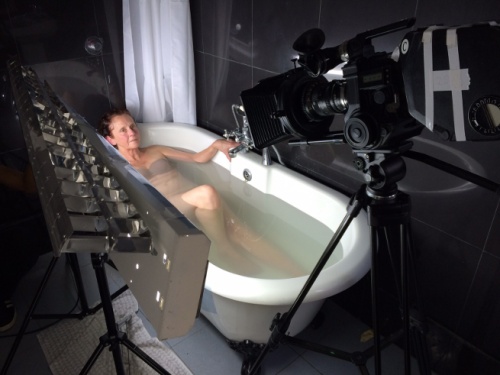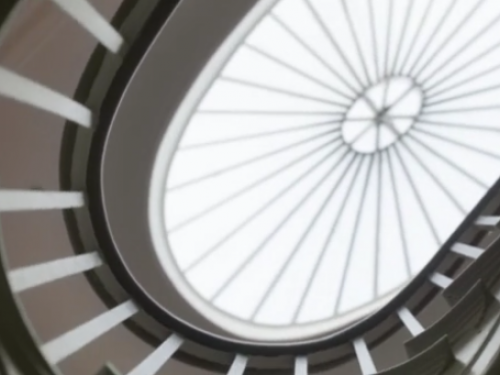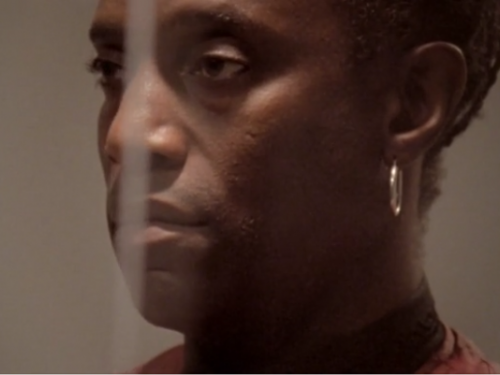Standing on the Shoulders of Giants: Filmmaker Saskia Dixie
Ahead of the release of her short film Capital of the C on Channel 4 on 13 June, STOP PLAY RECORD filmmaker Saskia Dixie writes about the directors who inspired her.
This is the first post in our series in which STOP PLAY RECORD filmmakers tell us about their influences.
I drew on several influences while making Capital Of The C. At the time I was researching cinema and theatre tropes - looking for language that could inspire imagery in my head. I read a lot of technical books, in search of language commonly used in cinema and theatre. This informed a text which I then referred to throughout shooting - it set the tone and rhythm for the piece as well as providing visually stimulating material for the action.
Derek Jarman
Initially I placed a lot of focus on theatrical set design as a starting point for the film. I explored Derek Jarman’s work for that reason - films like Edward II (1991) and Wittgenstein (1993). It’s amazing to see work that blurs the boundary between theatre and film and challenges their differences, bringing the mediums closer together so they can be interchanged.
"It’s amazing to see work that blurs the boundary between theatre and film."
Set and props play an important part in both of these works by Jarman, contributing to a stage-like quality. But rather than being rooted to a seat in an auditorium, the audience is given a more dynamic insight through the use of a camera. Growing up as a ballet dancer I fell in love with the aesthetics of theatre, with it all playing out on one stage that constantly goes through a metamorphosis - the lights go dark and seconds later we are in a different location. This rapid transformation of one room into the next, though implausible, is completely accepted by an audience, and I think that’s fascinating. In admitting its own fallacy, it actually avoids being questioned as false, and therefore becomes something like reality.
Charles Atlas
At the same time, I was also expanding this theme of movement via Merce Cunningham and Michael Clark, looking at footage shot by Charles Atlas in the 1970s and 1980s. There is a sense of movement with Atlas’ camera style, not just because the subject itself is dance but because he seems to participate, carrying out his own form of choreography in unison with the subject.
"There is a sense of movement with Atlas’ camera style, not just because the subject itself is dance but because he seems to participate."
I experimented with how to make the three minutes of Capital Of The C really flow, working with paths of movement, the characters cutting through the space. It seemed inevitable to come to the conclusion of shooting in one take, a way to link the areas together and continue the rhythm throughout, like an unbroken chain of events.
Éric Rohmer
Éric Rohmer was also an important figure I looked to when formulating ideas for Capital. Rohmer stated: "The Universe proceeds at an equal rate, out of a Future, through a Present and into a Past." I came back to this time and time again as a kind of key phrase while shooting. It demonstrates that quality of bodies travelling through the space rhythmically that became so important to me.
"If films are very abstract, it can provide an anchor, a pattern and something for the eye to follow. A sense of order can be brought to narrative chaos."
I came to Rohmer via a colour handbook that I refer to when starting most of my projects. His film Le Rayon vert (The Green Ray, 1986) led to my obsession with him, a realist piece and, as with a lot of Rohmer films, very chatty, but delicately housed in a symbolic colour palette.
I looked to him to see how he used this to convey a narrative. Colour on screen is really important to me - how clothing and surroundings relate to one another. You can balance the frame and get incredible pictures from really subtle selections of colour. Especially if films are very abstract, it can provide an anchor, a pattern and something for the eye to follow. A sense of order can be brought to narrative chaos. ■
STOP PLAY RECORD is a programme for young people interested in learning how to make experimental short films and being introduced to experts working across moving image sectors.
Learn about upcoming workshops and events.
Saskia Dixie's film is shown at midnight on 13 June on Channel 4, as part of the new Random Acts series.
This article is posted in: Articles, Blog, Events, Film, Student Forum
Tagged with: Stop Play Record, Saskia Dixie, learning, arts education, Standing on the Shoulders of Giants, Filmmaking, Experimental Film, Short Film, Young ICA









